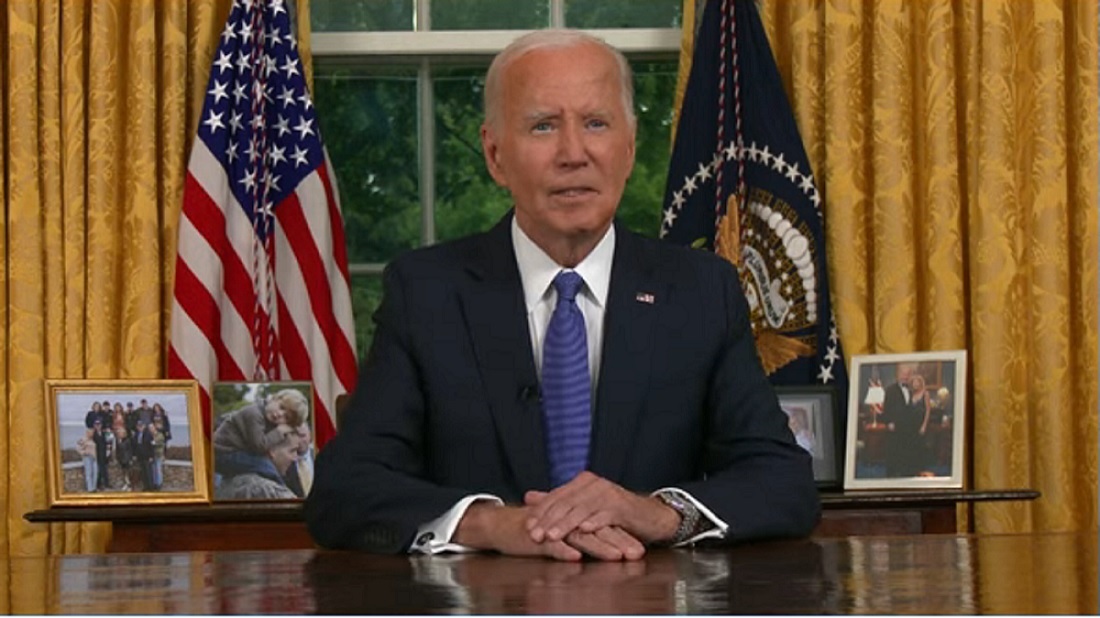
The president is no longer seeking re-election. But he can point to a slew of helpful industrial policies enacted during his time in office.
President Joe Biden on Wednesday night put on a stamp on last weekend’s seismic political news with a national television address from the Oval Office: He is ending his re-election campaign for this fall’s presidential election and throwing his support behind Vice President Kamala Harris.
“I’ve decided the best way forward is to pass the torch to a new generation. It’s the best way to unite our nation,” Biden said from behind the Resolute Desk. “I know there was a time and a place for long years of experience in public life. There’s also a time and a place for new voices, fresh voices, yes, younger voices. And that time and place is now.”
Biden becomes the first president to not seek re-election since Lyndon Johnson, and Harris, now the likely Democratic Party nominee, begins an abbreviated campaign at the top of the ticket during which she’ll lay out her own policy priorities.
Will any of the dozens of big policy buckets be different than Biden’s? There are currently a zillion news articles and think pieces about this and a zillion more will be written as the vice president gets specific. But no matter who wins the White House in November – this is an election, after all, and it’s up in the air – the next president’s approval ratings will likely be bolstered by a strong national economy.
“Whoever becomes president in 2025 is going to inherit a manufacturing economy that has a big upside at a high ceiling,” Alliance for American Manufacturing President Scott Paul, told the New York Times. “Part of that is because the monetary policy environment is likely to be better.”
That’s right; the Federal Reserve is likely to lower interest rates in the coming years. Cheaper cars and houses, great! But the other part of the booming manufacturing economy is the many investments – made possible by federal programs signed into law by Biden – that will start paying off, and the many more projects that will get underway.
“Mr. Biden isn’t entirely responsible for the sunny outlook. White House officials play a relatively minor role in slowing inflation and exert no direct control over interest rates. But big policy packages passed on his watch are helping to fuel a burst in green-energy, manufacturing and infrastructure investment that is expected to continue over the next several years. Expansions of dams and locks will be underway. Dozens of airport upgrades will be completed. Semiconductor factories will begin churning out chips.”
Those dams, locks and airport upgrades are courtesy of the $1 trillion infrastructure bill passed in 2021 with bipartisan support that significantly expanded Buy America rules across federal spending. The semiconductor factories is coming courtesy of the CHIPS and Science Act of 2022, a bipartisan bill that passed with bipartisan support. And much of the burst in green-energy and manufacturing investment can be attributed to the Inflation Reduction Act (IRA) of 2022, a misnomer for what would more aptly called the biggest clean energy industrial policy enacted anywhere, ever. And it comes laden with incentives to localize production in the United States.
All have helped supercharge manufacturing in the last few years, as has increased trade enforcement that ensures unfairly traded goods don’t enjoy access to the American market. This is a problem that is eternally a work in progress, but the Biden administration has shown good initiative in pursuing it.
While the history of economic policy during the Biden administration hasn’t yet been written, the successes of the infrastructure bill, CHIPS Act and the IRA will feature heavily in it. And, even as internal combustion engine vehicles slowly step back and the EV age begins, the next president can’t let off the gas with these American-made industrial policies. They’re behind the manufacturing boom, and will power it for the next few years.

